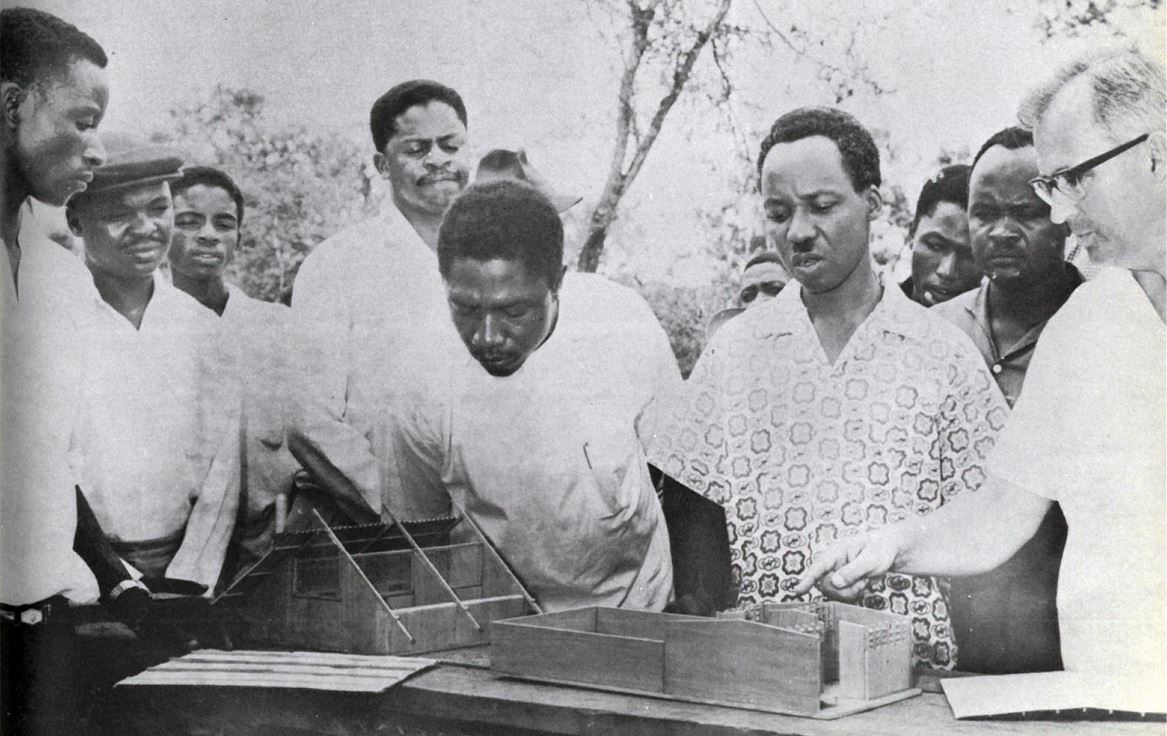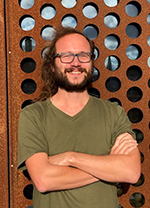In Sweden to map out architectural history

White spots on the architectural historical map. That is what made Sebastiaan Loosen leave Belgium and KU Leuven, where he had gotten two first-cycle qualifications and a doctoral degree, to come to Stockholm and KTH for a year of post-doc research. At KTH he has delved into Nordic development aid in the post-modern, cold war era. A history that surprisingly little has been written about.

The period from roughly mid-20th century to the 1980s saw the rise of many critical voices against a modernist development that was perceived to have gone astray, with old environments – perceived to lack value and be a source of problems – being demolished and replaced by housing blocks and office towers, and negative sides of automotive transport becoming visible. These ‘post-modern’ intellectuals argued for giving attention to soft values and the good qualities of historical environments.
As an engineer architect, who had also studied social and political philosophy, Sebastiaan Loosen dedicated his doctoral studies in architectural theory to this discussion where the fundamentals of architecture were being questioned. Some of the examples he used was the catholic priest Sieg Vlaeminck, who left the church, studied sociology and became a passionate voice in urban sociology, writing newspaper articles, arguing for a scientific approach to architecture.
Another case is Atelier de recherche et d’action urbaines, or ARAU in short, a group of architects and architect teachers who became urban activists working against buildings being demolished in order to build mono-functional office towers. They used their capacity as teachers as they and their students presented alternative plans whenever a new office tower was planned. Their activities overlapped with those of Archives d’Architecture Moderne, an organization working to preserve architectural history and rediscovered architectural drawings that they saved from getting lost. This way they used history as an argument. These are groups and people with different and complementary roles in this counter-movement. And they used something that we perceive as neutral – archive keeping and history – for political means, highlighting the importance of what we chose to preserve and what we discard.
The same time period also a saw a radical global transition to a post-colonial world where development aid became a new phenomenon. Part of it addressed the shortage of trained professionals in the newly liberated countries.
“When Algeria, the largest country in Africa, became independent in 1962 it had only two trained Algerian architects, and in Congo, the second largest African country, there were only twelve persons with a university degree in total when it became independent in 1960,” explains Sebastiaan Loosen. “Due to the lack of investments in higher education during the colonial era, there was an apparent need of technical knowledge which was mobilized in development aid.”
During his doctoral studies, Sebastiaan Loosen came across the Post Graduate Centre Human Settlements at KU Leuven. Established in the 1970s, it catered to the need of students coming from the global south. This impacted the people working there who were exposed to new impressions, and the centre’s activities contributed to the Leuven school becoming a strong voice in architectural theory, addressing architecture’s role in relation to processes of modernization and cultural displacement. In the medium sized countries there was generally one similar centre that benefited from the development work. In the Netherlands it was Rotterdam, and in Sweden Lund. This insight was a basis for Sebastiaan Loosens post-doc project.
The rise of development aid took place in the midst of the cold war, which meant that there was an obvious geopolitical interest to the international relations. It was thus used to establish an ideological hegemony. The Soviet Union could e.g. donate a university campus to a specific country to align it with their own sphere of influence. Sweden and the Nordic countries, having limited colonial prehistory and being less involved in the cold war dichotomy became privileged partners for the global south countries to work with, in the context of development aid. They also spent a larger part of the national budget on it.
“But there is very little architectural history written on the Nordic countries in the context of development aid, says Sebastiaan Loosen. This is remarkable since they were so productive, and this “white spot on the map” was one of the reasons why I wanted to spend part of my post-doc in Sweden. One big question that this raises is how Swedish society and industry benefited from these substantial exchanges. Among other things it opened up a new market for the housing industry in the wake of the Million Programme that was nearing its end.”
Something he found at KTH is a self-published report from a Swedish architect who spent several years in Africa in the 1960s. In it was a photo of “Mr. Dennis” standing beside the then Tanganyikan President and the Swedish director of a housing project. Mr. Dennis, a local carpenter, co-designed the houses being built it the project, he made the model exhibited to the president in the photo and he was the first to test-live in one of those houses. But the only reason we know his name is the report making it an exception to the normal situation where local workers are seldom given a place in history.
The image featuring Mr. Dennis became the cover photo of an international online three day conference that Sebastiaan Loosen arranged during his post-doc year at KTH: “Architectural training and research in the foreign aid-funded knowledge economy 1950s-1980s”. A fully online conference had its pros and cons. Because of participants coming from different time zones, it was limited to six hours per day, which actually made it more concentrated. The online format also allowed for a more inclusive conference with people joining from 36 countries. There were presenters from Pakistan, Bangladesh and Kenya and audience from countries like Singapore and South Africa, and a group of 20 students from Uganda also turned up.
“What you miss with the online format are the conversations that take place in the margins of the conference, says Sebastiaan Loosen. To amend for this we arranged a number of meet and greet meetings for the presenters in June. This created a more informal atmosphere and the discussions impacted the presenters’ work in finalizing the papers. The discussions in the conference also became more coherent and consistent than is normally the case.”
Next year Sebastiaan Loosen will continue his post-doc project at ETH Zürich in Switzerland where he will join a research group with a lot of expertise in architecture and urbanism in the context of the global south.
So what happened with the report on Swedish development aid found in the KTH library? It was actually withdrawn shortly after, making it an interesting case in the discussion of what we preserve and what we discard from history.
Text: Johan C Thorburn
This is the 15th article in the
